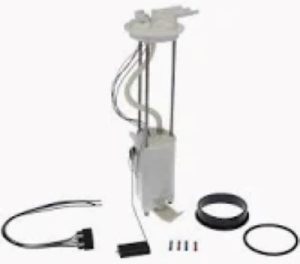A fuel pump creates an essential accessory in a car which supplies the optimum volume of fuel required by the engine for its best functionality. In modern automobiles, fuel pumps automatically deliver gasoline from the gas tank to the amount of pressure in the range of 40 to 60 PSI required by the engine's fuel injection system. As we mentioned earlier, it is necessary to keep a steady pressure in order for the combustion efficiency of high performance engines. For example, a 50 PSI pump to an engine that needs 45 PSI will run produce smooth correct operation but even a single digit percentage drop from this pressure within the accessory pack on some HIVs can cause it to misfire or even stall.
Given the nature of fuel pumps, efficiency is key. The pump flow rate, typically a specific amount of fuel delivered by the pump per hour (LPH), ultimately determines how well the engine will perform under given operating circumstances. A passenger vehicle fuel pump might provide 100 to 150 LPH, whereas high-performance vehicles often need pumps that can deliver up to or more than 255 LPH. A reduced flow rate can impact acceleration and overall engine power, particularly when driving under high load conditions such as towing or steep gradients.
In addition, fuel pumps are the significant component as well and one of those which is directly linked to fuel efficiency since it responsible for feeding engine. Low-rated pump can make a vehicle consume more fuel that results in lowering miles per gallon (MPG) between 10%-15%. The case of the fuel pump:For instance, a vehicle that usually averages 30 miles per gallon might fall to 25 MPG due to the fuel issue and hold there, costing more money over time.Multilineage — Line height With a working pump, the engine receives the right amount of gas, avoiding waste.

One other thing to consider is how long the fuel pump will last. The majority of pumps were built to last about 100,000 and 150,000 miles depending on regular maintenance and factors like driving conditions. But, if the result of tough conditions like a lot of brake-and-go driving or running the vehicle with very little fuel. can cut up to 30% off a pump's life span. Keeping the tank above a quarter ensures that the pump does not overheat, which will increase its service life and ensure proper vehicle performance.
Fuel pumps are also essential components of emissions control. As fuel had to be metered more accurately with the newer, stricter emissions standards that began in 1979, this lead to a problem when computer controlled engine management systems entered service. A fuel pump that is not capable may cause the engine to run lean or rich, which will in turn make it have more emissions and fail an emissions test. Back in 2015 the EPA was fining automakers for emitting beyond what is legally allowable, with automakers finding they want to play closer to spec…and need a properly working fuel pump to do so.
Please click here Fuel Pump for further detailed knowledge of the Fuel Pump role & real-time situational maintenance tips.